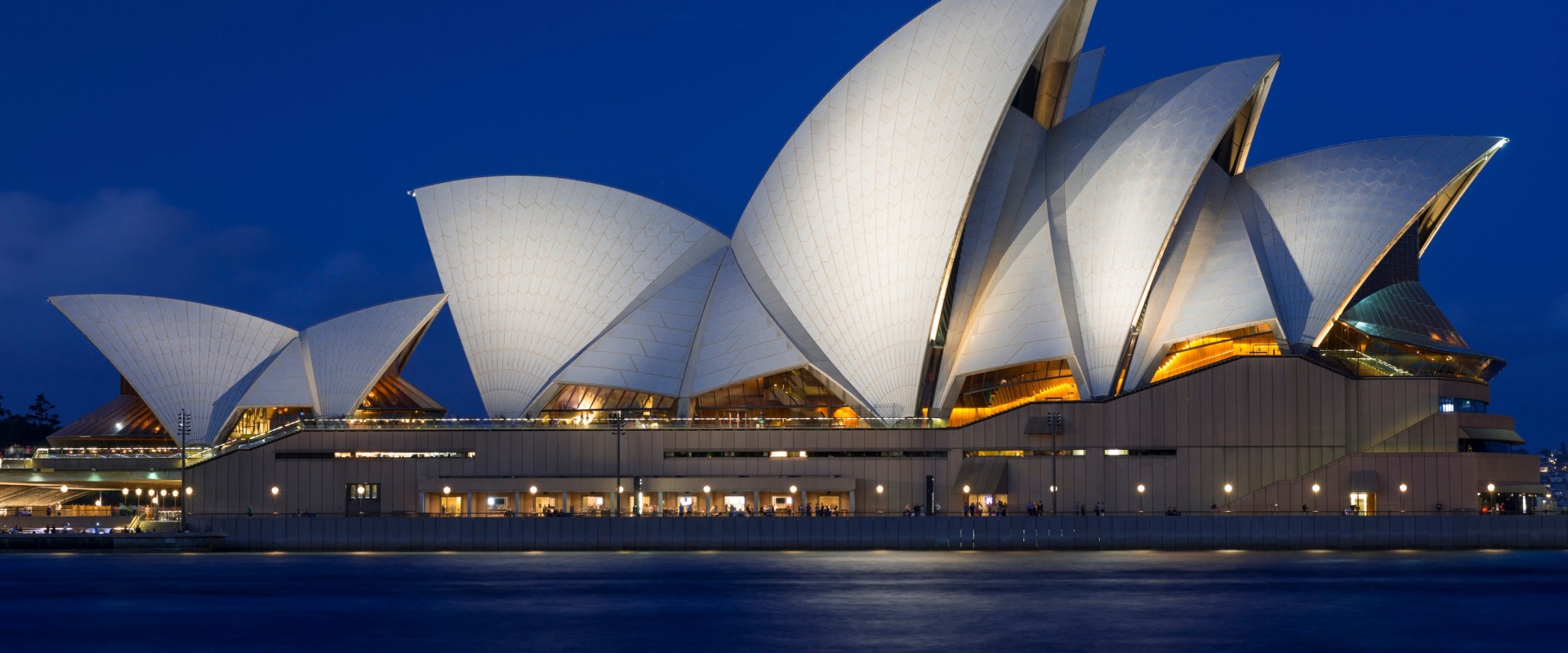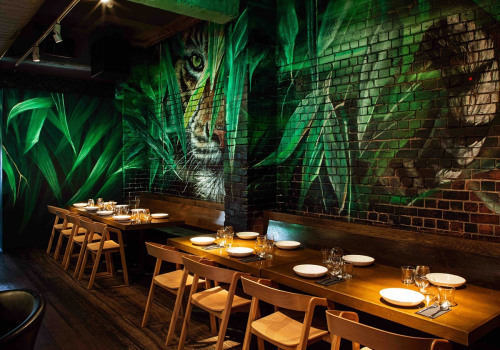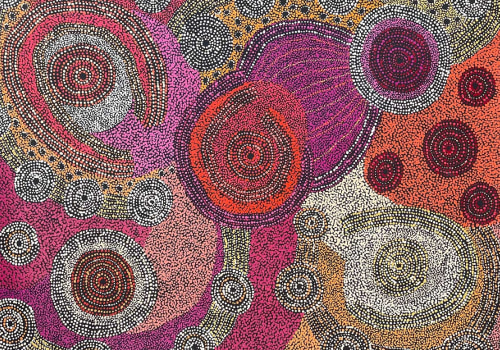The Sydney Opera House is an iconic landmark that is known worldwide as a symbol of Australia. It's a must-visit attraction for anyone traveling to this beautiful country, and for good reason. This architectural masterpiece has captured the hearts of millions with its stunning design and rich history. Located in the bustling city of Sydney, the Opera House is not just a performance venue, but a cultural icon that has become synonymous with the city's identity. Its unique structure and striking sails make it a standout among the city's skyline, and it has been declared a UNESCO World Heritage Site for its outstanding universal value. But there's more to the Opera House than just its exterior.
Inside, you'll find a vibrant arts center that hosts a variety of performances, from world-renowned opera and ballet to contemporary music and theatre. It's a hub of creativity and innovation, where artists from all over the world come to showcase their talents. In this article, we'll take a closer look at the Sydney Opera House and why it should be at the top of your list when visiting Australia. From its fascinating history to its modern-day significance, we'll delve into all aspects of this famous landmark. So, let's discover the wonders of the Sydney Opera House together!The Sydney Opera House is a world-renowned architectural masterpiece and a must-visit attraction in Australia.
This iconic landmark, located on the picturesque waterfront of Sydney Harbour, captivates visitors with its unique design and rich history. The idea for the Sydney Opera House was first conceived in the 1950s, when Eugene Goossens, the Director of the NSW State Conservatorium of Music, proposed the construction of a new performance venue to replace the aging Sydney Town Hall. A competition was launched to find the best design for this new cultural center, with over 200 entries received from architects around the world. The winning design was submitted by Danish architect Jørn Utzon, whose striking vision of a series of sail-like shells was chosen by the judging panel.
However, Utzon faced numerous challenges during the construction process, including technical difficulties and budget constraints. Despite these setbacks, the Sydney Opera House was officially opened by Queen Elizabeth II on October 20, 1973. The design process for the Sydney Opera House was not without its interesting facts and anecdotes. For instance, Utzon's original design did not include the iconic white shells that we see today. It was only during the construction phase that he added these elements, inspired by orange segments he saw while peeling an orange in his kitchen.
Since its opening, the Sydney Opera House has hosted numerous notable performances, cementing its reputation as one of the world's premier cultural venues. Some of the most memorable performances include the Australian Ballet's debut performance in 1965 and Frank Sinatra's legendary concert in 1974. Aside from its stunning architecture and impressive history, the Sydney Opera House boasts state-of-the-art performance spaces that continue to attract top artists from around the world. The Concert Hall is renowned for its exceptional acoustics, while the Joan Sutherland Theatre is a popular venue for opera and ballet performances. Despite its status as a top attraction, the Sydney Opera House has not been without its controversies.
The construction process was plagued by financial issues, with the project running significantly over budget. Additionally, there were disputes between Utzon and the project's management team, leading to his resignation in 1966. Nevertheless, the Sydney Opera House remains an integral part of Australian culture and society. It is considered a national icon and a symbol of modern architecture, attracting millions of visitors each year and generating significant revenue for the local economy. Some critics may argue that the Sydney Opera House's expensive maintenance costs make it a questionable investment.
However, its ongoing popularity and cultural significance far outweigh any financial concerns. The Sydney Opera House continues to captivate audiences and inspire generations, solidifying its position as a must-visit attraction in Australia.
Discover the Fascinating History of the Sydney Opera House
The Sydney Opera House, located on Bennelong Point in Sydney Harbour, is an iconic and recognizable structure that has become synonymous with Australia. Its unique architecture and impressive design have captivated visitors from all over the world, making it a must-visit attraction for anyone traveling to Australia. The fascinating history of the Sydney Opera House dates back to the 1950s, when the New South Wales government launched an international design competition to create a new performing arts center. Danish architect Jørn Utzon's design was chosen out of 233 entries, and construction began in 1959. However, the construction process was plagued with challenges and setbacks, including cost overruns and conflicts between Utzon and the government.Despite these obstacles, the Sydney Opera House was finally completed in 1973, and has since become one of the most iconic and recognizable landmarks in the world. The design of the Sydney Opera House is often described as resembling sails or shells, and its intricate details and unique shape make it a true architectural masterpiece. In fact, in 2007, it was designated as a UNESCO World Heritage Site for its outstanding contribution to human creativity. One interesting anecdote about the landmark's construction is that it was originally estimated to cost $7 million and take four years to complete. However, it ended up costing $102 million and taking 14 years to finish. Despite these challenges, the Sydney Opera House has become a symbol of resilience and determination, representing the spirit of Australia.
The Sydney Opera House: More Than Just a Building
The Sydney Opera House is more than just a building – it is an iconic symbol of Australia and a must-visit attraction for tourists.Its distinctive design, which resembles sails or shells, has made it a recognizable landmark across the world. It is located in Sydney, the largest and most populous city in Australia, and is a major contributor to the city's economy. But beyond its aesthetic appeal and economic impact, the Sydney Opera House holds significant cultural significance for Australia. It was designed by Danish architect Jørn Utzon and opened in 1973, becoming an instant icon and a symbol of modernity for Australia. The building's unique design also reflects the country's diverse cultural heritage, as it incorporates elements of Indigenous Australian art and design. In addition to its cultural significance, the Sydney Opera House has played a crucial role in Australia's tourism industry.
Millions of visitors from around the world flock to see this architectural masterpiece every year, making it one of the top tourist attractions in the country. This has not only boosted the local economy but has also put Australia on the map as a top travel destination. Furthermore, the Sydney Opera House has been designated as a UNESCO World Heritage Site since 2007, recognizing its outstanding universal value and contribution to human creativity. This prestigious designation has further solidified its importance as a cultural and architectural gem not just for Australia, but for the entire world.
Experience the Beauty and Functionality of its Design
The Sydney Opera House is an architectural marvel that has captivated visitors from all around the world. Its unique design and functionality have made it a must-visit attraction in Australia.This iconic landmark is not only a symbol of the city of Sydney but also a representation of Australia's cultural identity. The Sydney Opera House was designed by Danish architect Jørn Utzon and completed in 1973. Its distinctive sail-like roof structure has made it one of the most recognizable buildings in the world. The design was inspired by the shape of orange segments and was meant to mimic the sails of a ship, paying tribute to the city's maritime history. Aside from its striking exterior, the Sydney Opera House is also known for its state-of-the-art functionality. It is home to multiple performance venues, including the Concert Hall, Opera Theatre, Drama Theatre, Playhouse, and Utzon Room. These venues have hosted some of the world's most renowned artists and performances, making it a cultural hub for music, dance, and theater. The Sydney Opera House also offers daily tours that give visitors an inside look at its unique design and functionality.
From learning about the construction process to visiting the backstage areas where performers prepare for their shows, these tours provide a deeper understanding and appreciation for this architectural masterpiece. In addition to its regular programming, the Sydney Opera House also hosts various events and festivals throughout the year. From music concerts and film screenings to food and wine festivals, there is always something happening at this iconic landmark. With its breathtaking design and diverse range of events, the Sydney Opera House truly lives up to its reputation as one of Australia's top attractions. Whether you are a first-time visitor or a local looking for a new experience, make sure to add this iconic landmark to your itinerary for an unforgettable experience.
Addressing Common Criticisms and Concerns
Sydney Opera House has been a popular tourist attraction in Australia since its opening in 1973. However, despite its iconic status, it has also faced criticisms and concerns over the years. One of the most common criticisms of the Sydney Opera House is its cost. The original budget for the construction of the building was estimated at $7 million, but it ended up costing $102 million.This budget overrun caused controversy and backlash from the public. However, it is important to note that the Sydney Opera House has not only become a major source of income for Australia's tourism industry, but it has also generated significant revenue through its various performances and events. In fact, it is estimated that the Sydney Opera House contributes around $775 million to the Australian economy every year. Another criticism of the Sydney Opera House is its design. Some argue that its unique architecture does not fit in with the surrounding area and can be considered an eyesore. However, this design has become an iconic symbol of not just Sydney, but all of Australia.
Its distinctive white sails have become synonymous with the country and have even been featured on postage stamps and coins. Moreover, the Sydney Opera House was designated as a UNESCO World Heritage Site in 2007, recognizing its cultural and architectural significance on a global scale. This designation further highlights the importance and relevance of this landmark today. In conclusion, while the Sydney Opera House may have faced criticisms and concerns, it has proven to be a vital part of Australia's identity and economy. Its unique design and designation as a UNESCO World Heritage Site only add to its allure and importance. It continues to captivate audiences and remains a must-visit attraction in Australia.
Discover the Fascinating History of the Sydney Opera House
, Experience the Beauty and Functionality of its Design, The Sydney Opera House: More Than Just a Building, Addressing Common Criticisms and Concerns - all these aspects make the Sydney Opera House a must-visit attraction in Australia. The iconic landmark, with its unique architecture and designation as a UNESCO World Heritage Site, has captivated tourists from all over the world.Its significance in Australia's tourism industry cannot be denied, making it an essential stop for anyone visiting the country. Despite criticisms and concerns, the Sydney Opera House remains a symbol of beauty and functionality. It represents the city of Sydney and its people, showcasing their creativity, innovation, and determination to push boundaries. In conclusion, the Sydney Opera House is more than just a building - it is a cultural icon that continues to inspire and fascinate visitors. Its rich history, stunning design, and undeniable significance make it a must-see attraction for anyone traveling to Australia. So add this iconic landmark to your travel bucket list and experience the beauty and wonder of the Sydney Opera House for yourself.







